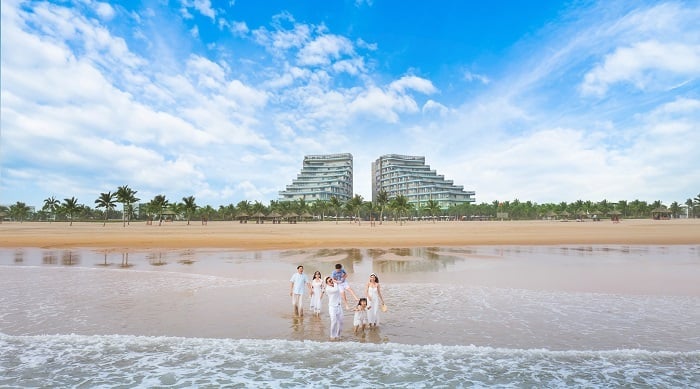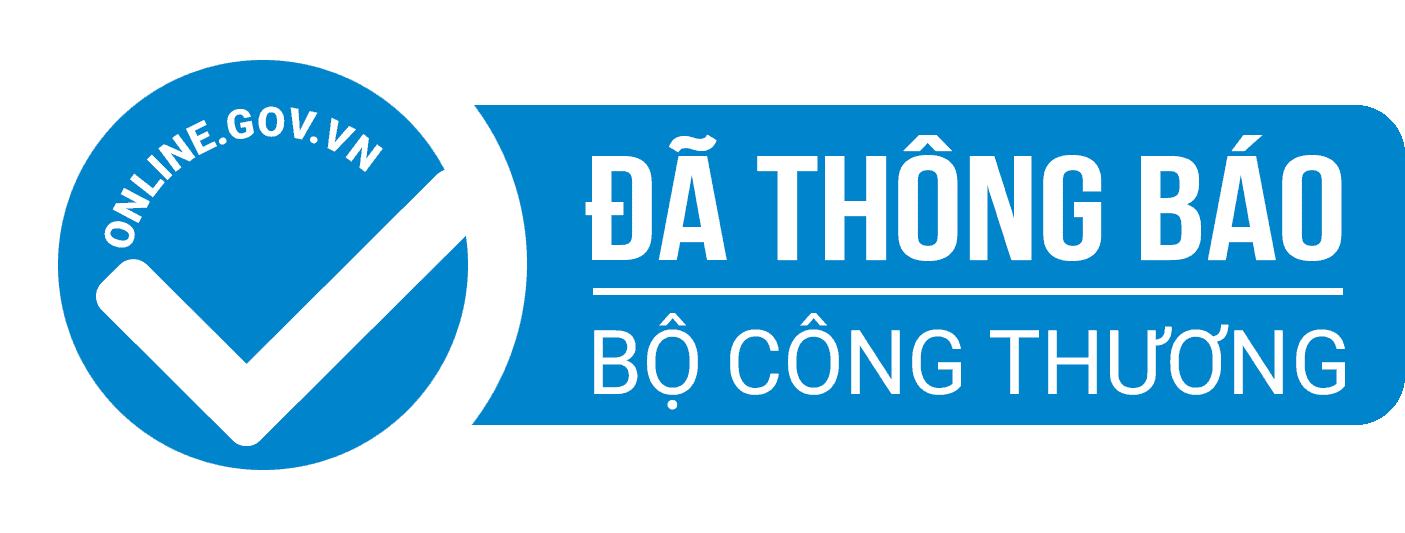While the Vietnamese language is the national language of the country, it has 3 regional variations. There are over 110 recognized dialects and languages spoken across the land, making the vast linguistic diversity of the country. Therefore, your Vietnam travel journey would not be complete without learning about its language, which will help you truly feel Vietnam's rich traditions.
1. The language system of Vietnam at a glance
What is Vietnam's language? Vietnam is considered a multi-ethnic country, consisting of 54 ethnic groups with various languages. Vietnamese is the language of the Kinh people, which is the biggest ethnic group in Vietnam. Since 1945, the Vietnamese language has been the official language of the country. It is spoken as the first language by about 85% of the Vietnamese population and more than four million Vietnamese people living abroad. It is also the second language of the other 53 ethnic minorities in Vietnam.
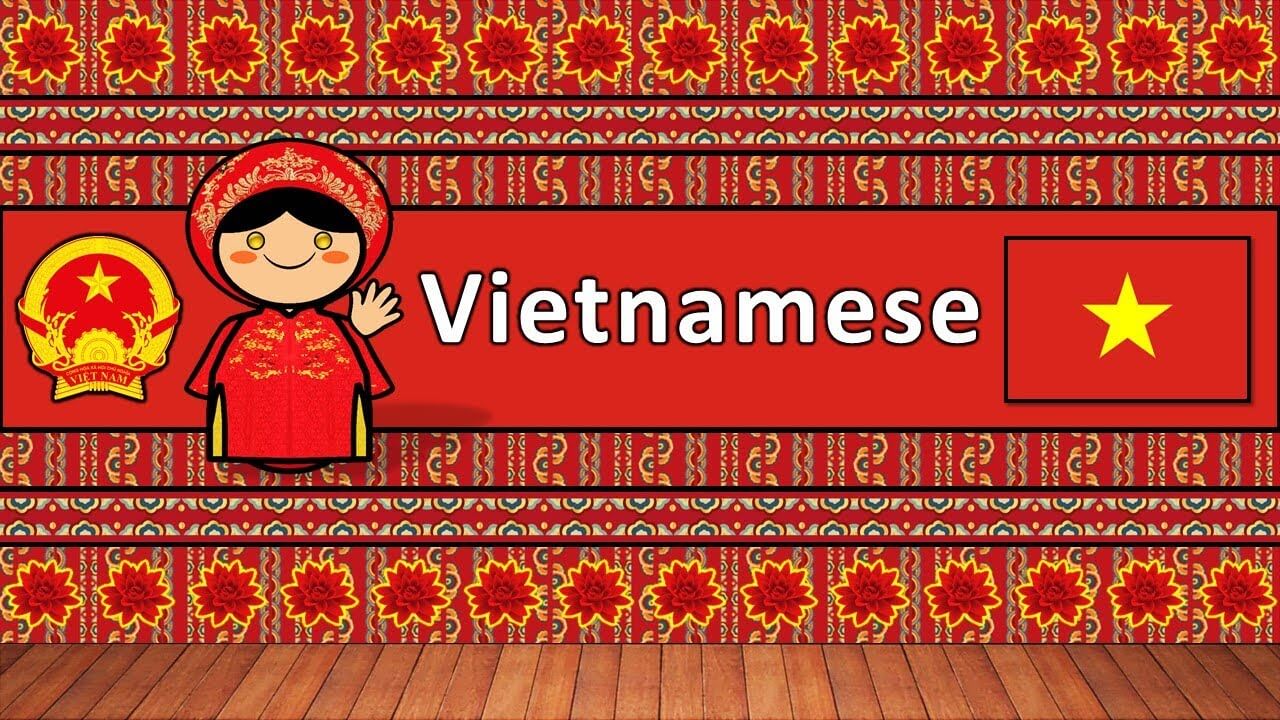
The languages of Vietnam ethnic groups belong to 3 linguistic families, including the Austroasiatic languages, the Sino-Tibetan, and the Kra-Dai, which are divided into 8 groups:
- Viet – Muong group
- Tay – Thai group
- Mon – Khmer group
- Mong – Dao group
- Kadai group
- Chinese group
- Tibeto group
- Austro-Polynesian group
The Vietnamese language belongs to the Viet-Muong group of the Austroasiatic language family. In particular, it is mainly spoken in three dialects, corresponding to the three main regions of Vietnam: Northern Vietnamese (centered in Hanoi), Central Vietnamese (centered in Hue), and Southern Vietnamese (centered in Ho Chi Minh City). The Northern dialect is the basis for the official establishment of Vietnamese. These dialects differ mainly in pronunciation and, to a limited extent, in vocabulary. Despite these differences, the three dialects are mutually understandable, like British English and American English. All three of them use the same writing system, which is called chữ Quốc ngữ.
You may also like:
- Airlines in Vietnam: TOP 5 best domestic brands for passengers
- Vietnam capital: Things to know before your departure
- Female names in Vietnam: 100+ MOST popular names from A to X
2. Things to know about Vietnamese - The official national language
In the distant past, the Vietnamese language was only an oral language passed through generations. It was not until the ninth century, under the control of the Chinese, were Vietnam’s documents written in Chinese ideographs called chữ Nho (Confucian script), also referred to as chữ Hán (Han script). Based on those Chinese ideographs, Vietnamese scholars developed their native writing system, known as chữ Nôm (Nom script).
Although there is no record of when it was created, chữ Nôm was already well established by the eleventh century. These two writing systems both remained in use until the 19th century, when France invaded Vietnam and chữ Quốc ngữ (Vietnamese Latin-based writing system) gradually replaced chữ Nho as the official national language. Chữ Quốc ngữ is now widely used in Vietnam and is the official writing system of the country.
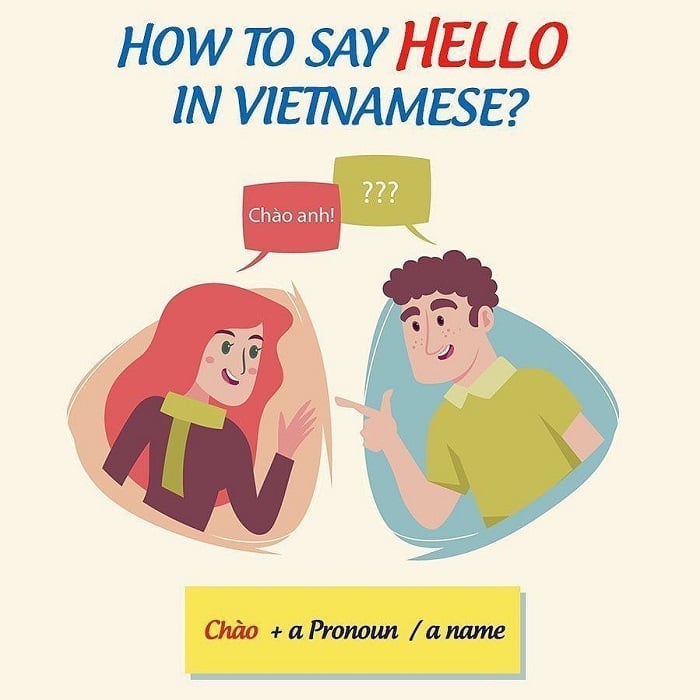
Besides having a long history, the Vietnamese language is also unique. Vietnamese is distinguished from other languages by the use of tones to differentiate between words with the same consonant and vowel sequences. Word order determines the syntactic relations between words, and modifiers rather than affixes are used to express the tense and aspect of verbs.
2.1. Phonology of the Vietnamese language
While English phonemes consist of consonants and vowels, the Vietnamese language has three types of phonemes: consonants, vowels, and tones.
- Consonants in the Vietnamese language
There are now 17 consonants in the Vietnamese language, including b, c, d, đ, g, h, k, l, m, n, p, q, r, s, t, v, x, and 11 consonant compounds, including ch, gh, gi, kh, ng, nh, ph, qu, th, tr, and ngh. The special digraph “gh” and trigraph “ngh” are almost typically used before the vowels of “i”, “e”, “ê”.
- Vowels in the Vietnamese language
The Vietnamese alphabet has 11 single vowels: a, ă, â, e, ê, i, y, o, ô, ơ, u, and ư. Besides, there are 32 diphthongs: ai, ao, au, âu, ay, ây, eo, êu, ia, iê/yê, iu, oa, oă, oe, oi, ôi, ơi, oo, ôô, ua, uâ, ưa, uê, ui, ưi, uo, uô, uơ, ươ, ưu, and uy. 13 triphthongs are present: iêu/yêu, oai, oao, oeo, uao, uây, uôi, ươi, ươu, uya, uyê, uyu.
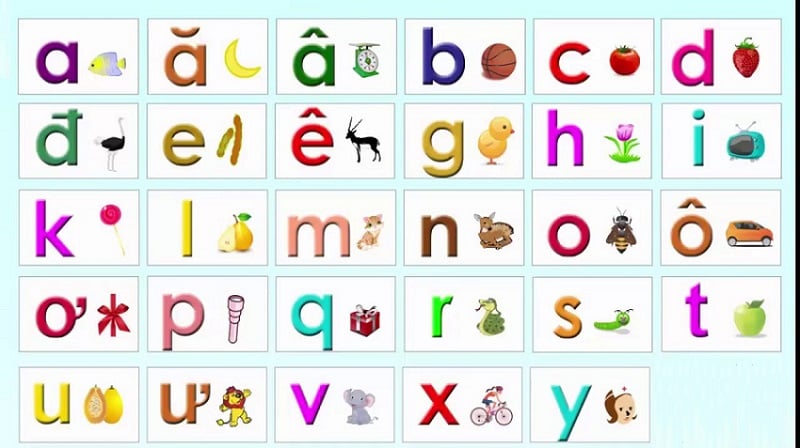
- Tones in the Vietnamese language
Vietnamese uses tones as phonemes since a change in tone results in a change in meaning. For example, ma (ghost) and má (cheek) are two distinct words that only differ in tone: ma has a level tone while má has a rising tone.
There are 6 Vietnamese tones used in Northern Vietnam, including mid-level, low falling, high broken, low rising, high rising, and heavy. For the southern dialect, the high broken tone is often produced as the low rising tone. Thus, there are only five tones produced in the southern region.
- Mid-Level (không dấu): a, ă, â, e, ê, i, o, ô, ơ, u, ư, y
- Low Falling (dấu huyền): à, ằ, ầ, è, ề, ì, ò, ồ, ờ, ù, ừ, ỳ
- High Rising (dấu sắc): á, ắ, ấ, é, ế, í, ó, ố, ớ, ú, ứ, ý
- High Broken (dấu ngã): ã, ẵ, ẫ, ẽ, ễ, ĩ, õ, ỗ, ỡ, ũ, ữ, ỹ
- Low Rising (dấu hỏi): ả, ẳ, ẩ, ẻ, ể, ỉ, ỏ, ổ, ở, ủ, ử, ỷ
- Heavy (dấu nặng): ạ, ặ, ậ, ẹ, ệ, ị, ọ, ộ, ợ, ụ, ự, ỵ
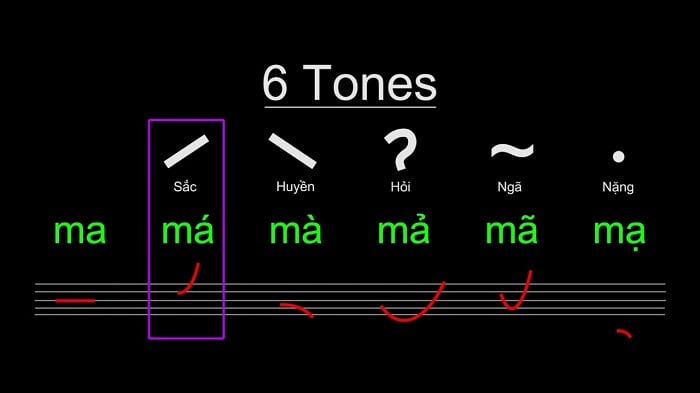
2.2. Grammar
The Vietnamese language, like English, follows the subject-verb-object word order, as exemplified in the sentence below:
- John ăn phở => John eats phở.
However, unlike English, the Vietnamese language does not apply subject-verb agreement, for example:
- John và Einstein ăn phở => John and Einstein eat phở. The form of the verb ‘ăn’ remains the same for every subject. Meanwhile in English, plural subjects require plural verbs (eat rather than eats).
Tenses do not affect the forms of Vietnamese verbs either. Tenses are simply shown by adding a supportive word, as seen below:
- John is about to eat => John sắp ăn
- John has just eaten => John mới ăn
- John is eating => John đang ăn
- John ate => John đã ăn
- John will eat => John sẽ ăn
You may also like:
- Best places to visit in Vietnam: TOP 15+ exotic spots not to be skipped
- South Vietnam: Plan your itinerary with the TOP 13 unmissable destinations
- Asia travel: A worthwhile journey to explore nature and culture
3. Some useful expressions in Vietnamese for your travel
Knowing basic Vietnamese phrases will surely be an advantage for travelers. The closer you get to the locals, the easier it is to access the country's hidden gems, hospitality, and also discounts. Here is a list of basic words and phrases for you to use when in Vietnam.
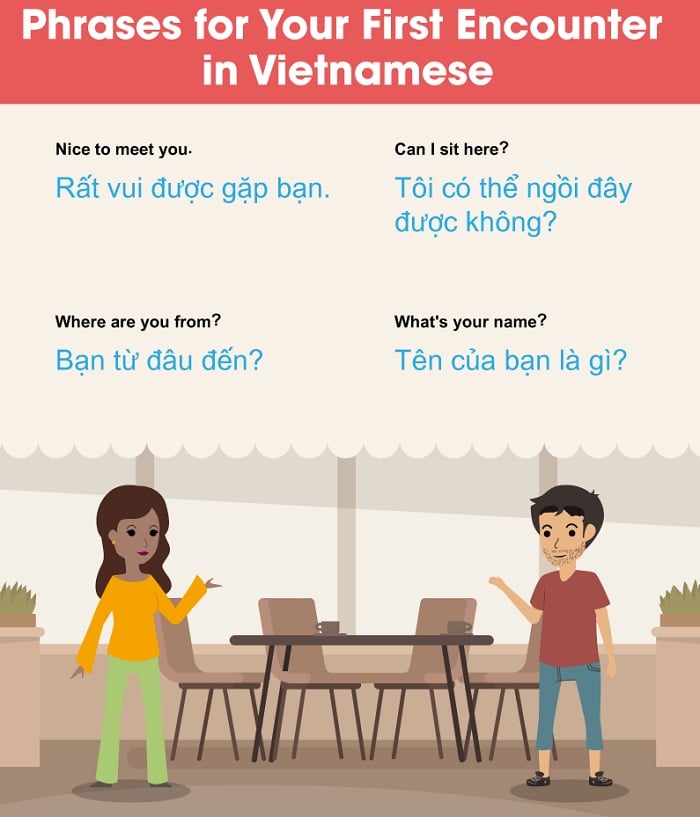
- Useful Vietnamese phrases for greetings
- Hello in Vietnamese language (politely) = Xin chào /Sin chow/
- How are you doing? = Bạn khỏe không? /Ban kwe khom/
- Sorry = Xin lỗi /Sin loy/
- No problem = Không có gì /Khong koh zi/
- No, thank you! = Không! Cảm ơn /Khom, kahm uhn/
- Goodbye in Vietnamese language = Tạm biệt /Tarm byeet/
- Can you speak English? = Bạn nói Tiếng anh được không? /Banh noi thien an durkh khom/
- Thank you in Vietnamese language = Cảm ơn /kahm uhn/
- How old are you? = Bạn bao nhiêu tuổi /Ban ban nyew twoi/
- I am __ years old = Tôi ___ tuổi /Toy ___ doyy/
- What is your name? = Tên bạn là gì? /Ten bang la zi/
- My name is ___ = Tên tôi là ___ /Ten toy la ___/
- Merry christmas in Vietnam's language = Giáng sinh an lành /zang sing an lan/
- Basic words to address people
- I = tôi /toy/
- You = bạn /ban/
- Female (junior) = em /em/
- Female (senior) = chị /ji/
- Male (junior) = em /em/
- Male (senior) = anh /anh/
- Basic Vietnamese language phrases for directions
- Where is the taxi? = Taxi ở đâu? /Taxis are dauh?/
- Where is the ATM? = Máy ATM ở đâu? /May ATM urn dole/
- Bus stop = Trạm xe bus /Tram seh butt/
- Go straight = Đi thẳng /Di thaang/
- Go right = Rẽ phải /Se fih/
- Go left = Rẽ trái /Se chai/
- Stop = Dừng lại /Duhng laai/
- Go to the airport = Đi sân bay /Di sun bay/
- Can I have a map in Vietnamese language? = Cho tôi một cái bản đồ /chor toi mot cai ban dor/
- How far is it? = Bao xa /Bao seh/
- Close = Gần /Gunh/
- Far = Xa /seh/
- Downtown = Trung tâm thành phố /Trumh tam tan fo/
- District = Quận /Wung/
- Where? = Ở đâu /uh dow?/
- Wait 5 minutes = Chờ năm phút /Churhn nam foot/
- Basic Vietnamese phrases for shopping
- How much? = Bao nhiêu? /Baow nyew/
- Too expensive in Vietnamese language = Mắc quá /Mac wa/
- Can you reduce the price? = Bớt được không? /Boat duoc khom/
- Do you want to sell? = Có bán không? /Cor ban kohm?/
- I want to buy = Tôi muốn mua /Toi muon mua/
- One size smaller = Một size nhỏ hơn /Mot size nyunh hunh/
- One size larger = Một size lớn hơn /Mot size lunh hunh/
- You are so beautiful in Vietnamese language = Em đẹp quá /Em dep wah/
- You are so handsome = Anh đẹp trai quá /Anh dep wah/
- Basic Vietnamese numbers
- 1 = Một /moat/
- 2 = Hai /high/
- 3 = Ba /bah/
- 4 = Bốn /bone/
- 5 = Năm /nom/
- 6 = Sáu /shao/
- 7 = Bảy /by/
- 8 = Tám /tom/
- = Chín /chin/
- 10 = Mười /mooy/
- Basic Vietnamese phrases for emergencies
- I need to see a doctor = Tôi cần gặp bác sĩ /Toy can gap back szi/
- I am sick in Vietnamese language = Tôi bị bệnh /Toy bee benh/
- I need to go to the hospital = Tôi cần đi bệnh viện /Toy can di ben vien/
- I had food poisoning = Tôi bị ngộ độc thức ăn /Toy bee nyo doc thuch an/
- I was robbed = Tôi bị cướp /Toi bee cuoop/
- Call the police = Gọi cảnh sát /Goi gang sack/
- Help me = Cứu tôi với /Coo toy vuyh/
Traveling around Vietnam, you can find a lot of interesting things in terms of language, culture, and people. To explore the beauty of the S-shaped country to the fullest, you should stay and recharge your energy at a comfortable accommodation.
Vinpearl's hotel and resort system comes highly recommended. It is a top-rated lodging brand in Vietnam whose branches are situated at prime locations throughout Vietnam. In addition, the system’s facilities and services can satisfy even the most demanding travelers.
_1703597307.jpg)
>>> Book rooms in Vinpearl Phu Quoc, Vinpearl Nha Trang, Vinpearl Resort & Golf Nam Hoi An in advance to get the best deals!
Vietnamese language, with its long history and various accents, adds to the beauty of the S-shaped country. Hopefully, this article will give you a brief understanding of this beautiful language and some common phrases that will be useful for you on your upcoming trip to Vietnam.




